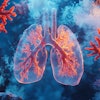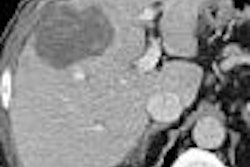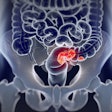NEW ORLEANS - If categorical-course attendance is any indication, then radiologists definitely aren't ceding the cross-sectional imaging of the heart to other specialists. Instead, they're spending extra time and money to bolster their knowledge of cardiovascular CT and MRI.
But those who are looking to start a cardiac-specific service face some logistical challenges, as described by a pair of speakers here Sunday at the annual meeting of the American Roentgen Ray Society.
Perhaps the first consideration is whether to partner with cardiologists in a venture. That was the recommendation of the speakers, both of whom practice in leading academic settings. But if the prospects for partnership are poor, all is not lost.
"You can compete with the cardiologists directly by marketing to primary care physicians and the cardiothoracic surgeons, both of which are no great friends of cardiologists and would be very happy to bypass them altogether if they could," noted Dr. Arthur Stillman, head of cardiovascular MRI at the Cleveland Clinic.
Cardiac surgeons are showing a lot of interest in MR images for surgical planning, as a preferable alternative to echocardiographic images, said co-presenter Dr. David Bluemke, the director of MRI at Johns Hopkins University in Baltimore.
Viability imaging with myocardial delayed enhancement and imaging to guide the treatment of atrial fibrillation are two other big growth areas for cardiac MR, Bluemke added.
Meanwhile, cardiologists are likely to focus their own imaging efforts in CT for a variety of reasons, according to both speakers.
While MDCT of the coronary arteries isn't likely to replace catheter angiography at the pace that some have predicted, Stillman said, it nonetheless represents a threat to what has been a "cash cow" for cardiology.
"In the next couple of years, CT will be clearly the gatekeeper for the cardiac cath lab," said Bluemke, alluding to the modality's usefulness in sorting intermediate-risk patients. "If you're running the cardiac cath lab, you understand that you're going to be involved in multidetector CT of the coronary arteries."
And while CT may be more like a one-trick pony in cardiovascular imaging, focused on coronary artery disease, cardiologists will be attracted to the ease, speed, and profitability of its use, Bluemke suggested.
Also, Bluemke noted, "the service paradigm for CT right now is very similar to what (cardiologists) practice in other areas, specifically echocardiography. For the most part technologists can perform the examinations and physicians can look at them later."
The greater technical challenges and onsite attention demanded by cardiac MR may be an opportunity or a burden for radiologists. But in any case, radiologists should include both MRI and CT in a cardiovascular imaging service.
"It lets you better compete by offering a more complete diagnostic service," Stillman said. "Offering both, you'll answer clinical questions being posed rather than just offering a test."
It also enables more flexibility in dealing with each modality's contraindications. "To be able to shift the patient from (one) modality to another to answer the question is very, very helpful," Stillman said.
Bluemke noted that concerns about contraindications will increase for MRI in the next few years, with the increased implantation of pacemakers and ICDs.
Another challenge for radiologists with busy MR scanners, Bluemke said, may be meeting the turnaround requirements of referring cardiologists.
At Johns Hopkins, Bluemke said, "the service expectations, in terms of cardiovascular disease, are usually on the order of four hours. If a study's not completed by noon, they've found something else to do. They've gone on to manage the patient."
"If you don't set aside slots on your scanner," Bluemke concluded, "it will be very difficult to pursue these studies."
By Tracie L. Thompson
AuntMinnie.com staff writer
May 16, 2005
Related Reading
As cardiac CT interest heats up, so does EBCT, MDCT debate, March 31, 2005
Most MDCT scanners fall short in cardiac imaging, September 3, 2004
EBCT versus MDCT? It depends on the application, July 1, 2003
CT screening exams deliver higher incidental radiation dose to breasts, December 4, 2003
Copyright © 2005 AuntMinnie.com




















